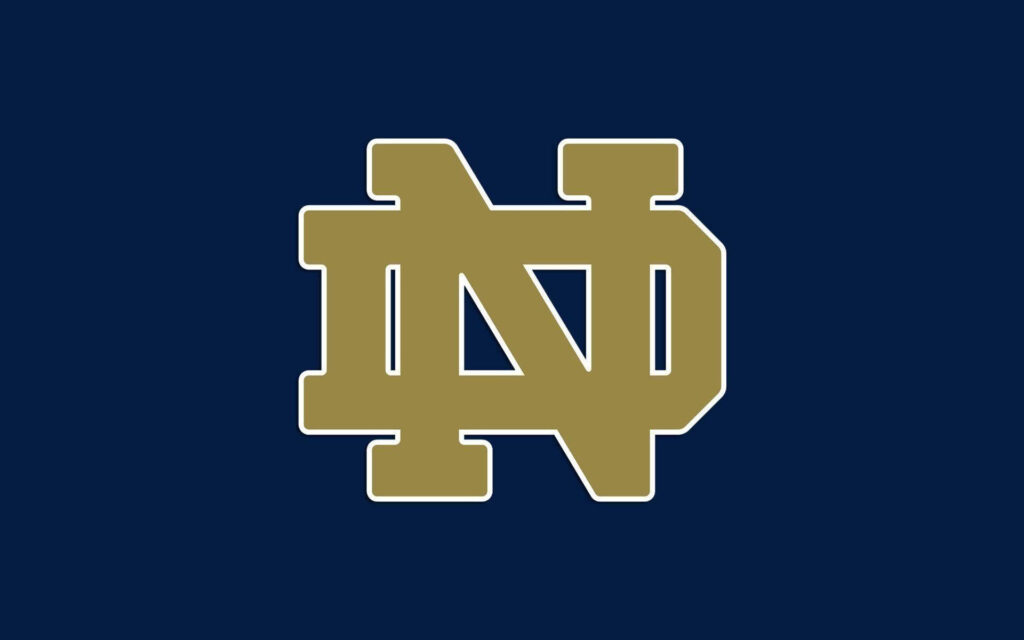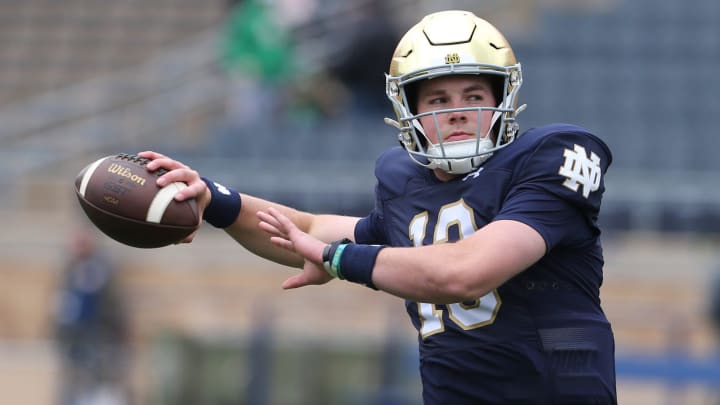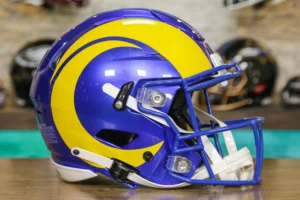
Riley Leonard Loads Up the Stat Sheet, But Notre Dame’s Passing Game Still a Work in Progress
For all the buzz surrounding Riley Leonard’s injured shoulder last week, any concerns about his availability or performance were swiftly silenced in Notre Dame’s dominant 45-17 win over Purdue. The junior quarterback didn’t just play – he thrived, packing his stat line in nearly every category and leading the Irish to a lopsided victory over a clearly overmatched Boilermakers team.
Leonard’s contribution to Notre Dame’s ground game was nothing short of spectacular, as he racked up 100 rushing yards on 11 carries, including three touchdowns. His ability to run with power and vision, including a 34-yard touchdown sprint, helped bolster a staggering overall ground performance that saw the Irish amass 364 rushing yards. Purdue’s defense had no answer for Leonard’s dual-threat capabilities, and the quarterback’s performance cemented his role as the leader of the Irish offense – at least on the ground.
The Run Game: Leonard’s Legs Steal the Show
What truly made Leonard stand out in this matchup was his rushing dominance. While he’s been known as a capable runner, his three-touchdown performance on the ground was eye-popping. His physicality in the open field, combined with his quick decision-making, left the Purdue defense scrambling to contain him. Leonard’s longest run of the day, a 34-yard gallop into the end zone, epitomized the mismatch Notre Dame presented to the Boilermakers.
But it wasn’t just Leonard; the entire Irish run game overwhelmed Purdue. Audric Estimé and Jadarian Price provided a dynamic one-two punch from the backfield, helping to chew up yardage and keep the Purdue defense on its heels. With the offensive line dominating the trenches, Leonard and the running backs were able to execute the game plan flawlessly, and the Irish run game was, quite simply, unstoppable.
The Passing Game: A Work in Progress
As thrilling as Leonard’s rushing performance was, Notre Dame’s passing game remains an area of concern. Leonard’s final stat line through the air – 11 of 16 passing for 112 yards, with no touchdowns and no interceptions – was efficient but unspectacular. Averaging just 7 yards per completion, Leonard’s passing attack was serviceable but far from the explosive air game needed to complement the rushing attack. He failed to connect with his receivers for any significant gains, and Notre Dame’s offense remains unbalanced.
Leonard hasn’t thrown a single touchdown pass this season, a troubling sign for a team with College Football Playoff (CFP) aspirations. While his legs are a lethal weapon, the lack of production through the air could become a liability as the Irish face stronger competition in the weeks ahead. Defensive units from teams like Ohio State and USC will not be as forgiving as Purdue, and a one-dimensional offense is unlikely to hold up against elite opponents.
Challenges in the Receiving Corps
Part of the struggle with the passing game lies in Notre Dame’s receiving corps. At times, it seems as though the wideouts aren’t creating enough separation, forcing Leonard to either hold onto the ball too long or scramble to make a play with his legs. There have been moments where the receivers are open, but Leonard hesitates, perhaps due to lingering discomfort with his shoulder or a lack of chemistry with his receivers.

It’s clear that the passing game is still a work in progress for both Leonard and his receivers. Tight end Mitchell Evans, a reliable target for Leonard, was kept relatively quiet in this game, while standout wide receiver Tobias Merriweather struggled to break free from coverage. While Leonard’s passing numbers were sufficient to get the job done against Purdue, they won’t be enough in tighter contests against higher-ranked teams.
The Bigger Picture: Can Notre Dame Become Multi-Dimensional?
For Notre Dame to remain in contention for a CFP spot, Leonard and the Irish offense will need to find balance – and quickly. The rushing attack is strong, but no team can rely solely on its ground game and expect to contend with the elite defenses they will face in the latter half of the season. While Leonard has proven himself a capable playmaker with his legs, he must take the next step as a passer for Notre Dame’s offense to reach its full potential.
Defenses will begin to stack the box and focus on containing Leonard’s rushing ability if they don’t respect his ability to throw downfield. Head coach Marcus Freeman and offensive coordinator Gerad Parker will need to adjust their offensive strategy to open up the passing game, creating more opportunities for Leonard to stretch the field and develop a rhythm with his receivers.
What Needs to Change
A few things must happen for Leonard and Notre Dame to elevate their passing game:
1. Better Chemistry with Receivers: Leonard needs more time to build trust with his receiving corps. This might involve tweaking routes or working on timing in practice to ensure the receivers are in the right spots when Leonard is scanning the field.
2. Improved Playcalling: While the run-heavy game plan worked wonders against Purdue, Notre Dame’s offense needs to diversify its playcalling. Integrating more play-action passes, quick slants, and screen plays could help Leonard find a groove and open up the field for bigger passing gains.
3. Receiver Separation: Notre Dame’s wideouts need to do a better job creating separation from defenders. Whether it’s sharper route running or using speed to get past coverage, the receiving corps must give Leonard better options down the field.
Leonard’s Potential and Notre Dame’s Path Forward
Riley Leonard has undeniable talent, particularly as a dual-threat quarterback. His ability to make plays with his legs is invaluable and will continue to be a weapon for Notre Dame as the season progresses. However, for the Irish to be a legitimate CFP contender, Leonard must grow as a passer. The question now is whether the Irish can make the necessary adjustments to become a more balanced and multi-dimensional offense.
Notre Dame’s schedule doesn’t get any easier. Matchups against Ohio State, USC, and Clemson loom large, and those teams will certainly expose any weaknesses in the Irish offense. Leonard’s passing game must take a step forward if Notre Dame hopes to run the table and secure a spot in the College Football Playoff.
For now, Leonard has quieted the critics about his shoulder, loading up the stat sheet in almost every category against Purdue. But the next challenge for Leonard and Notre Dame is becoming a complete offense. The clock is ticking, and Notre Dame’s CFP hopes hinge on it.






